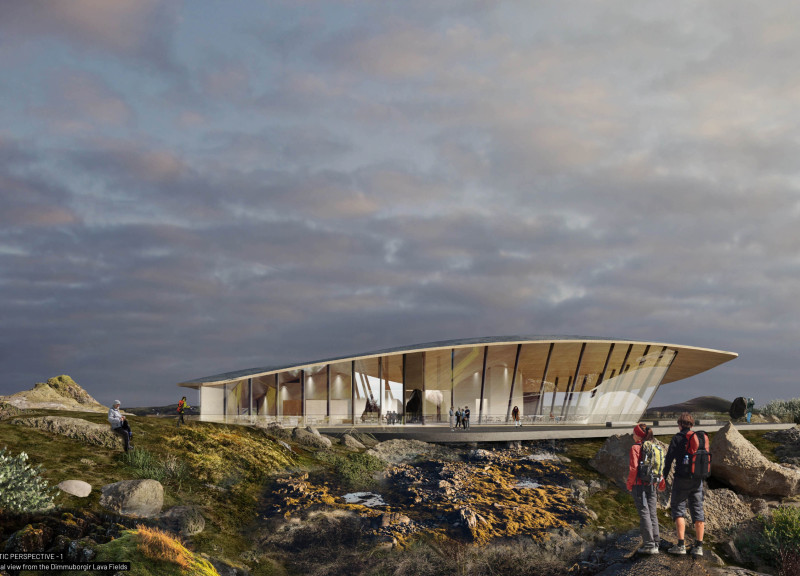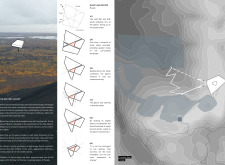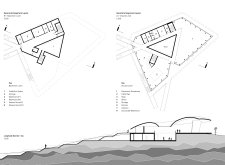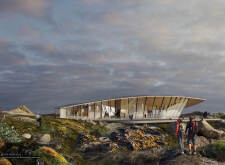5 key facts about this project
The Black Lava Centre, situated in the Mývatn region of Iceland, serves as an important space for education and cultural engagement. The design connects visitors with the unique geological features of the area, emphasizing the relationship between local glacial and volcanic landscapes. The centre aims to foster a deeper understanding of environmental processes and cultural narratives through its architectural approach.
Architectural Concept
The design integrates the natural surroundings into the layout, allowing the building to respond thoughtfully to the contours of the landscape. Linear paths wind through the site, offering visitors framed views of the striking terrain and encouraging interaction with the environment. This intentional layout enhances the overall experience and promotes a sense of immersion in the site.
Spatial Organization
Inside the centre, spaces are organized to serve specific functions, including areas for exhibitions and hospitality services. This clear organization improves accessibility and encourages people to engage with what the centre has to offer. Exhibition areas are designed to present information about the geological processes at work in the region, along with stories that reflect local heritage.
Environmental Integration
The building's design takes the local climate into account, with its form oriented to manage wind patterns. This consideration not only improves visitor comfort but also showcases how architecture can adapt to its environment. An emphasis on sustainability is apparent, suggesting the use of local materials that blend in with the natural setting while minimizing impact on the landscape.
Key Design Features
Design elements within the centre reflect the characteristics of Mývatn’s landscape. The architectural forms resemble the shapes of glaciers and volcanic features, adding visual depth while reinforcing the connection between the building and its environment. Each aspect of the design supports its purpose as a space for learning, encouraging visitors to appreciate the natural processes that shape their surroundings.






















































